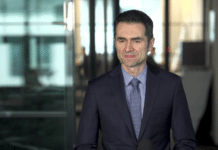The economic disruptions of recent years have demonstrated how important organizational resilience is for ensuring the continuity of business operations during a crisis. Companies that can not only quickly adapt to a new situation, but also prepare well for potential social or economic challenges, gain an operational advantage. As the pandemic has shown, flexibility and readiness to implement alternative solutions can decide the success of a given entity in periods of instability. This success is most often measured using financial indicators, used by six out of ten surveyed companies, according to the report, “One size doesn’t fit all: Four postures toward resilience,” by the consulting firm Deloitte.
The purpose of building organizational resilience is to enable a smooth transition through three stages of crisis management: response, recovery, and return to full functionality. The response should be adapted to the type of adverse event. Companies will approach individual disruptions, such as an IT system failure, quite differently from problems affecting the entire industry, such as a stock market crash or the prospect of new legislative restrictions.
Based on a qualitative study conducted among senior executives of companies operating in Europe, North America, and Asia-Pacific, Deloitte has developed a report analyzing organizations’ attitudes toward potential crises. They established the range of resilience-building strategies, the nature of actions, vulnerabilities and threats, challenges and barriers, and resilience-building tactics and KPIs.
“Organizational resilience is still a little-known topic. Although the global economy requires continuity of operations, not everyone seems to treat the matter with due seriousness. Meanwhile, resilience has a strategic importance. It can not only save a business, but also support its positive transformation. Its building should be one of the priorities for managers,” says Julia Patorska, partner, leader of the economic analysis team, Deloitte.
The analysis of the survey results revealed four approaches to building resilience. The first is an operational defensive stance, focusing on immediate actions in response to individual disruptions. Its main goal is to support the threatened part of the organization in quickly solving the problem and “avoiding disaster”. One third of respondents claimed this to be the dominant approach in their organizations.
The second approach, adopted by a quarter of respondents, is a whole company defensive stance. It involves building resilience through a coordinated strategy that allows the company to quickly exit from a crisis. The operational offensive approach, represented by 10% of surveyed companies, is characterized by higher activity but is limited to part of the organization, usually the most exposed to disruptions. Companies not only want to survive a given incident, but also see it as an opportunity to enter new markets, develop activities or improve results.
The final represented attitude – offensive whole company – treats resilience as a holistic strategic goal. The organization undertakes active measures to prepare for potential incidents. In the long-term perspective, disruptions are a source of new opportunities for these types of companies. This is how 30% of surveyed companies operate.
“Most of the companies analyzed by Deloitte adopt defensive attitudes. This is understandable in some ways. In classic business, disruptions are typically treated as crises that need to be resolved as quickly as possible. This is not a flawed way of thinking, as it allows for operational continuity and a quick return to steady revenues,” says Alexander Muravitski, director and leader of Crisis & Resilience services in Central Europe, Deloitte. “However, it could be argued that this kind of thinking lacks long-term perspectives and broader aspirations. Those companies that see the potential for dramatic development in a crisis can gain a competitive advantage by proactively developing their services, products, or systems. This approach allows them not only to function better in calm times but also to cope more effectively with potential tremors,” he adds.
Building resilience in a company requires intensified efforts from management, financial outlays for detailed analyzes, and also significantly engages employees’ cognitive resources. One of the main obstacles to building resilience, according to respondents, is uncoordinated management. Individual departments in the company, developing their own part of the strategy, are not sure how to place it in the broader vision of the company or unify it with other units of the organization. In companies that adopt an operational stance, this is a significantly more significant problem, but even those that try to operate at the level of the whole organization often claim that they lack good management.
Another problem is low interest in the subject of building resilience. 30% of respondents representing companies with a defensive attitude pointed to this, and every tenth person from entities with an offensive attitude. For a subject that requires such a broad outlook, awareness not only of their industry but also the general business environment and current events, engagement of enthusiastic employees is key. Among other problems encountered on the way to building resilience, management also mentions short-sightedness, difficulty in measuring effects and high operational costs.
Every company interested in long-term and efficient operation sets success indicators. The same mechanism should be applied when assessing the effectiveness of crisis management actions. The most popular among the study participants are financial indicators – profits and losses, cash flows, sales – which are of utmost importance for 65% of respondents. More than half of the respondents also point to the high value of operational indicators – diversification, redundancy, supplier condition.
In order to make the decision on the way of building resilience, two basic issues need to be taken into account. The first one is the risk of inaction. The price paid for preparing for a potential crisis is high. However, considering resilience in a narrow perspective creates a risk that at the next threat that appears on the horizon, the company will not take appropriate action.
The second issue to consider is the approach to building resilience. After the decision to take action, it is necessary to avoid another extreme – excessive interference in operational processes. Building the infrastructure needed to adopt an overall offensive stance brings benefits, but not every crisis requires deep transformation. Sometimes quick rebuilding actions are sufficient.
To effectively respond to a crisis, it is necessary to identify the strengths of your company and build responsive systems based on them. Companies with an operational defensive attitude will focus on preparing employees and setting traditional effectiveness indicators – financial, operational, and stakeholder mood indicators.
At the same time, companies oriented overall offensively will focus on developing communication, organizational culture, and infrastructure.
“It’s worth paying attention to offensive approaches, characterized by a high share of innovation in crisis strategies and forward-thinking. The CEO of a German automotive company we spoke to responded appropriately to the growing interest in electric vehicles. He focused on communication as the basis of a resilience-building strategy. As part of this, a platform was launched for employees to report potential incidents in advance and share ideas for changing business processes before a crisis situation occurs. The platform proved to be highly useful during the pandemic,” says Alexander Muravitski.
Regardless of the adopted attitude, it is important to treat resilience as an important aspect of the company’s operation. The past few years have proved that most businesses are susceptible to numerous factors beyond their control, such as energy prices, the effects of the climate crisis, or unexpected migrations.
About the study:
The report is based on a qualitative study conducted in 2022 – conversations with senior executives of companies from different parts of the world. All interviewees held positions on the board or served as an executive vice president in multi-billion dollar valued companies (revenues of at least four billion dollars annually) offering services for businesses and retail customers in North America (7), the United Kingdom/European Union (6), and the Asia and Pacific region (7) in various industries (consumer goods, telecommunications, technology, automotive, retail, manufacturing, healthcare and life sciences, and financial services).


















